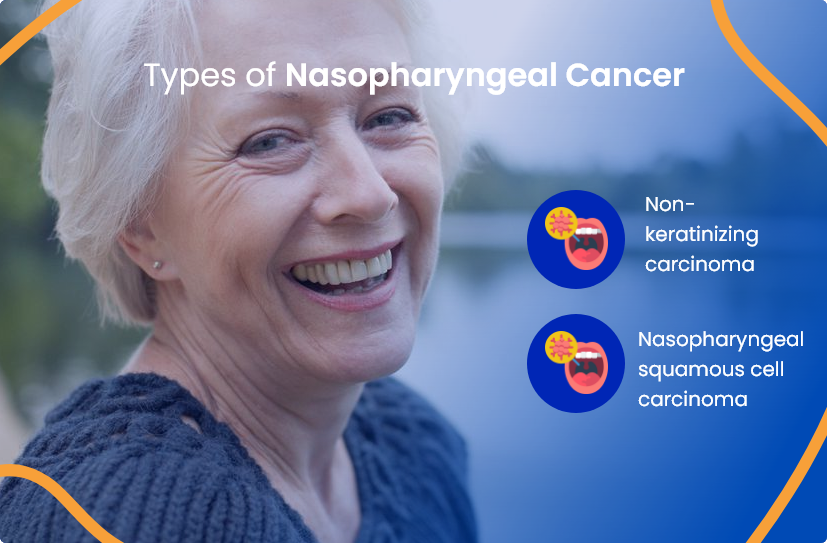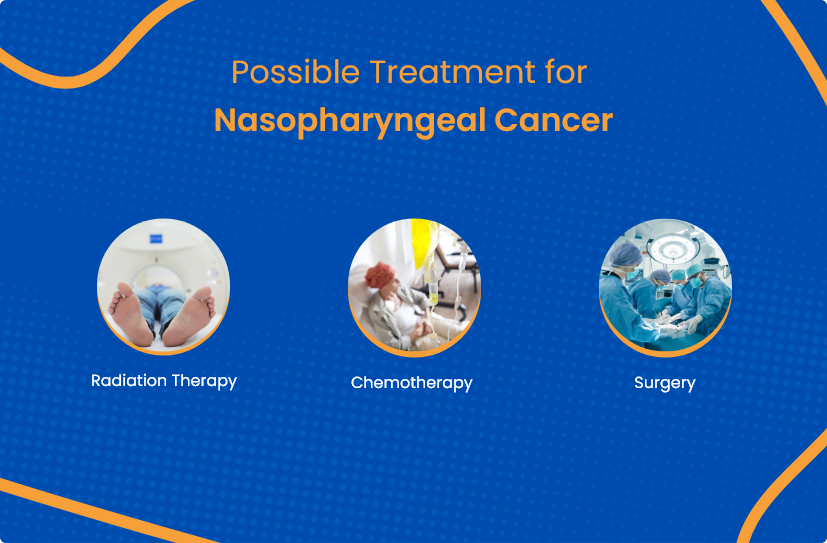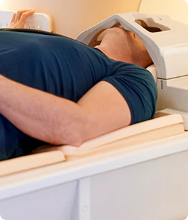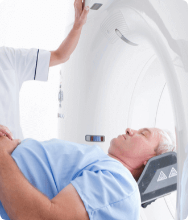
Book a Consultation
Thank you!
Your form has been sent successfully.

This form of cancer develops in the nasopharynx- the upper part of the throat behind the nose. The nasopharynx is a box-like chamber measuring 1½ inches on each side. It is located just above the soft part of the roof of the mouth and behind the nasal passages. It is a passageway for air that travels from the nose to the throat. Nasopharyngeal cancer is rare, and there is less than one case for every 100,000 people in most parts of the world (including the US) each year.
The following are nasopharyngeal cancer types. They all begin in the nasopharynx, and each type looks different under a microscope:

This type is strongly associated with prior Epstein–Barr virus (EBV) infection.
EBV is a member of the herpes virus family and is most commonly transmitted through
bodily fluids, particularly saliva.
Non-keratinizing carcinoma may be divided into differentiated and undifferentiated carcinoma.
Non-keratinizing undifferentiated carcinoma is the most common type of nasopharyngeal
carcinoma in the US.
Two major recognized histologic subtypes are keratinizing (K-NPSCC) and nonkeratinizing (NK-NPSCC).
The main symptom of nasopharyngeal cancer is a lump on the back of the neck. There may be one or more lumps, which are usually not painful.
Other warning signs or nasopharyngeal carcinoma symptoms include:
 Ringing in the ears (Tinnitus)
Ringing in the ears (Tinnitus)
 Hearing impairment
Hearing impairment
 Headaches
Headaches
 A sore throat
A sore throat
 Nasal congestion
Nasal congestion
 Trouble breathing or speaking
Trouble breathing or speaking
 Nosebleeds
Nosebleeds
 Pain & numbness in the face
Pain & numbness in the face
There are different nasopharyngeal carcinoma treatment options. Once the diagnosis is done, the medical team will discuss different treatment options. They may include the following:

Radiation treatment uses high-energy X-rays to kill cancer cells or stop them from growing. Nasopharyngeal cancer is sensitive to radiation, so this type of treatment is frequently used to treat it.
Chemotherapy uses drugs by killing the cancer cells or stopping them from dividing. This therapy is beneficial for cancers that have spread to other parts of the body because it travels through the bloodstream.
Surgery is a procedure used to detect cancer, remove cancer from the body, or repair a body part. It is occasionally used to treat nasopharyngeal cancer that has not responded to radiation therapy. If cancer has spread to the lymph nodes, the nasopharyngeal cancer doctor may remove the lymph nodes and other neck tissues.
The doctor will first ask about one's family history and conduct a physical examination. One's nasopharynx, head, neck, mouth, throat, nose, facial muscles, and lymph nodes will be thoroughly examined. Furthermore, the healthcare provider may perform the following diagnostic procedures:

The removal of cells or tissues for a pathologist to examine them under a microscope, for signs of cancer.

This scan can show whether or not a tumor is present and provide information about the size, shape, and location of a tumor.

Magnetic resonance imaging (MRI) captures detailed images of the affected areas inside the body and enables the diagnostic process.

A positron emission tomography (PET) scan is a procedure to find malignant tumor cells in the body where radioactive glucose (sugar) is injected into a vein that shows up during the scan. It may be used to find nasopharyngeal cancers that have spread to the bone.

As nasopharyngeal cancer is often linked to the Epstein-Barr virus, one may be tested to measure the blood level of Epstein-Barr virus DNA.
Our nasopharyngeal cancer specialists are committed to providing exceptional patient care with effective and personalized treatment plans. Some of Florida's most experienced providers are on our team who strive to create a supportive environment for patients and their families.
The following are our providers who you can consult at ACTC:

MD, Hematology & Oncology

MD, Ph.D., Hematology/ Medical Oncology

MD, Radiation Oncologist

The clinical team at ACTC has over two decades of cancer treatment experience. We are committed to providing patients with personalized care at all stages. Our facility has an infusion room, medical and radiation oncology exam rooms, and advanced diagnostic technology for nasopharyngeal cancer treatment.
Schedule a consultation by calling
 352-345-4565
352-345-4565
Nasopharyngeal cancer symptoms include a lump in the neck, hearing impairment or ringing in the ears, a blocked or stuffy nose, nosebleeds, and double vision.
Nasopharyngeal cancer is rare. Each year, there is less than one case for every 100,000 people in most parts of the world (including the United States).
The Epstein-Barr virus may increase the risk of nasopharyngeal carcinoma. It usually causes mild signs and symptoms, such as a cold.
Schedule a consultation by calling
 352-345-4565
352-345-4565